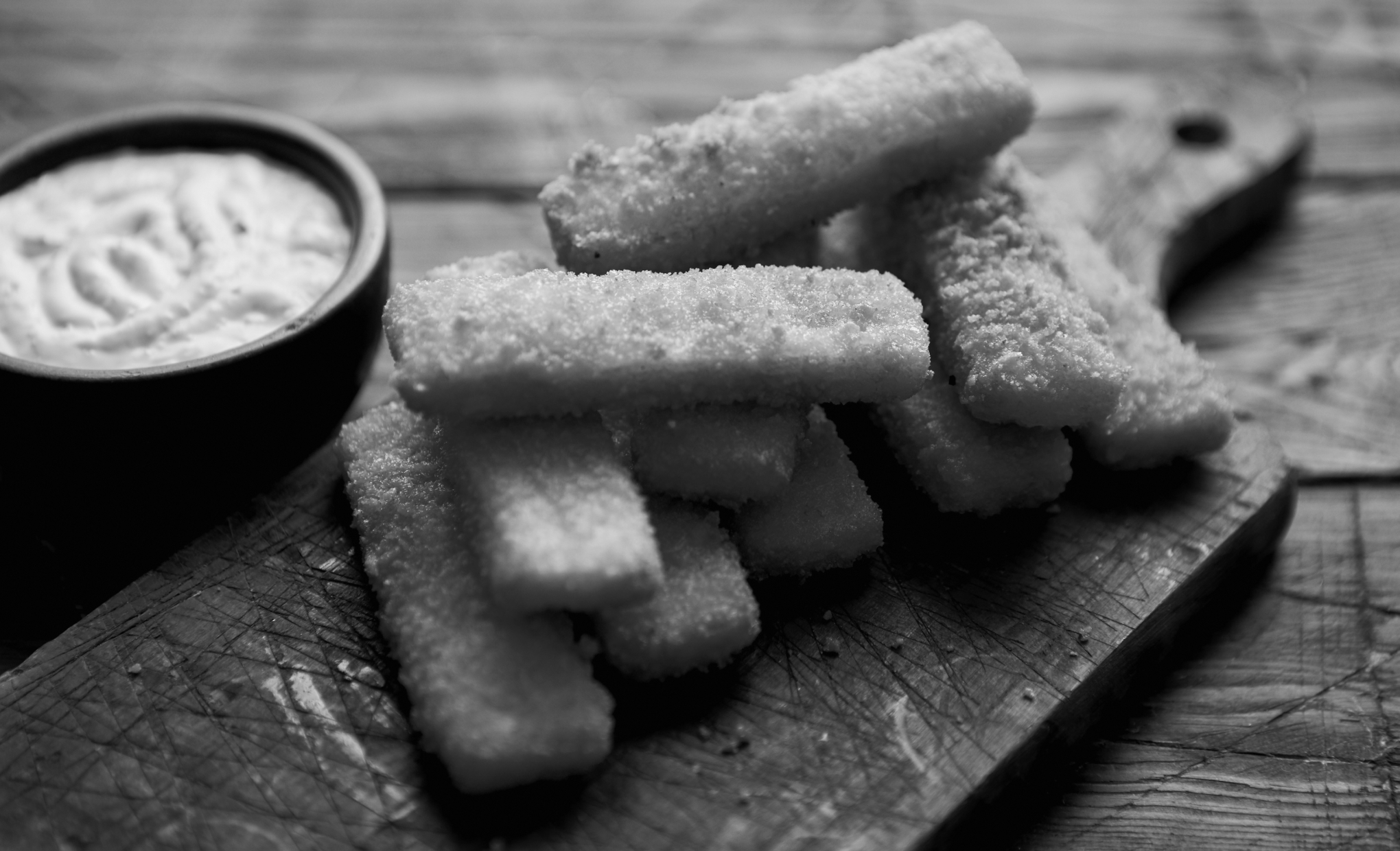Fish sticks arose as the solution to a postwar fishing industry problem: too much fish. Stronger diesel engines, larger boats, and new materials had increased the yield of catches in the wake of World War II. To keep the large amounts of fish being caught from spoiling, the fish were skinned, gutted, deboned, and frozen on board. The problem was further compounded because demand for fish was low; Americans preferred to indulge in meat, especially after wartime rations. And although Clarence Birdseye had revolutionized the frozen food industry with a novel freezing technique in the 1920s, frozen food’s reputation still wasn’t particularly positive. Frozen fish was especially problematic because the freezing process tended to yield large blocks of intermingled fillets. These frozen fish blocks were originally sold whole as “fishbricks” and packaged like ice cream. The idea was that housewives could chop off the exact amount of fish they wanted to cook that day; unsurprisingly, the product did not take off. Eventually, General Foods decided to pre-cut the bricks into standardized sticks and bread them. Fish sticks hit the market on October 2, 1953, when General Foods released them under the Birds Eye label. Fish sticks were originally part of a larger lineup of rectangular frozen foods that included chicken sticks, ham sticks, veal sticks, eggplant sticks, and dried lima bean sticks, but only the fish sticks caught on. They were made by running frozen fish blocks through an X-ray machine to check for bones, then sliced using bandsaws and tossed in a batter of egg, flour, salt, and spices before being breaded and briefly tossed into hot oil to set the coating; notably, the fish sticks themselves stayed frozen throughout this process, which remains largely unchanged today. Fish sticks caught on in part because they made eating fish easier and more palatable for Americans who were often fish-averse. Shortly after Birds Eye debuted their fish sticks, competing products from Gorton’s and Fulham Brothers were released. Thanks to aggressive marketing techniques, Gorton’s became the go-to brand of fish sticks. Today, fish sticks are still a staple of the frozen food aisle. They’re a surprisingly sustainable product (most contain Alaska pollock, which is largely sourced from well-managed fisheries, according to sustainable seafood advocates); the climate impact of making fish sticks is also reportedly small. And of course, their original appeal has not changed – they continue to make eating fish palatable and convenient for busy folks in America. Over the years, they’ve also gained popularity all over the world, and are especially beloved in the UK, Australia, and Germany (fish sticks were notably introduced to all 3 countries in the 1950s); some countries have even reported up to 50% increased demand for fish sticks in recent years!

Your go-to guide for weird history facts
Subscribe to the FREE daily email that makes learning about history fun.


